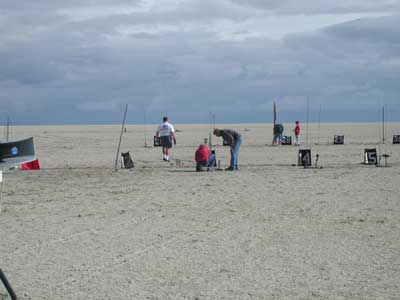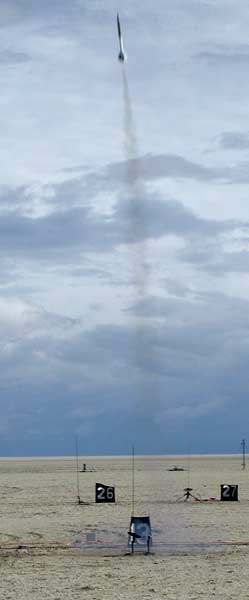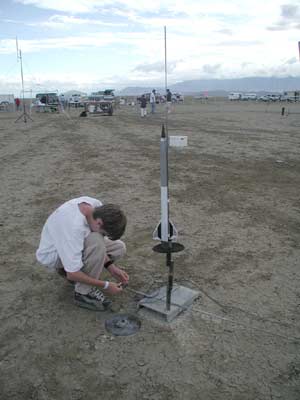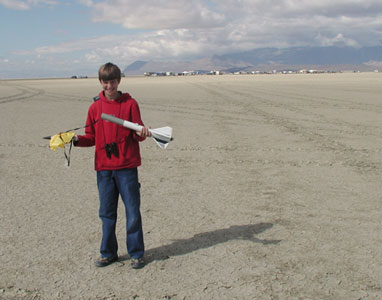
|
previous
page « home » next page
Eric's Launches
|

|
Eric built an Aerotech Mustang rocket for the trip. It's
about 32" tall and can use E, F or G motors. (Each letter rating is twice
the power of its successor. Most hobbist rockets use A though D engines.
You need special permits to use H and above.) We stopped at a hobby shop
in Colorado that had high power motors in stock and Eric bought an E and
two Gs. The E was for the maiden flight, the Gs were for the real fights.

|
We joined AERO-PAC, the organization
that put together this launch. Amoung other things, that gave us access
to the lauch pads. There were about 25 launch pads set up for every size
rocket, from small hobbist kits to 15 foot tall high powered behemoths.
To launch your rocket, you fill out a launch form with details about your
rocket (size, engine, ignition system, recovery system...) and have the
rocket checked out by the RCO (the person who gives the final okay that each
rocket stands a chance of being flightworthy). Then, when the pads are open
everyone who is ready to launch selects a pad and preps their rocket on it.
This image shows me watching Eric prep his Mustang amoung all the other pads. |

|
Eric had three successful launches. He did two on
Saturday and his biggest one on Sunday morning. My digital camera can take
five images in succession at about three frames per second. The image on the
left is one of those pictures, the one a third of a second before it has
the rocket on the pad before ignition, the image a third of a second after
it shows just a smoke trail. When these things leave the launch pad, they
are gone. |
|
Eric after a successful recovery.
A successful launch means that you got the rocket
back and can fly it again. Eric didn't measure the altitude of his shots,
but they were likely around 3,000 feet. With a good wind like the one on Sunday,
this can mean quite a walk, as the rocket deploys a parachute near its apogee
and drifts slowly back to earth.
|

